MODULE 6 - SECTION 3 - THE SPINO-CEREBELLAR LOOP
The next step in this sequence is that the motor cortex, guided in part by information that has been refined by processing in the lateral part of the cerebellar hemisphere, sends motor commands to the spinal cord (and motor nuclei in the brainstem).
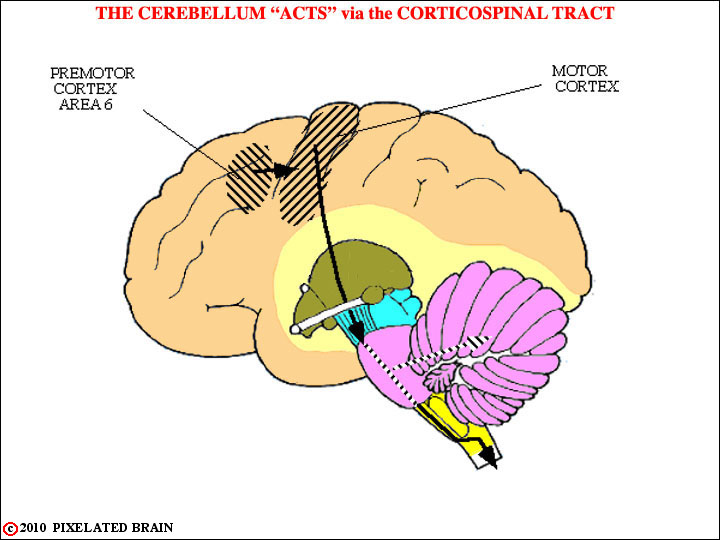
The descending axons of this pathway give off collaterals as they pass through the basilar pons and these fibers synapse on neurons which in turn project through the middle cerebellar peduncle to terminate in the vermis and intermediate region of the cerebellar hemisphere (on the side contralateral to the one where the motor commands originated). Thus, these regions of the cerebellar cortex receive a "copy" of the motor commands being sent to the spinal cord and motor nuclei of the brainstem.
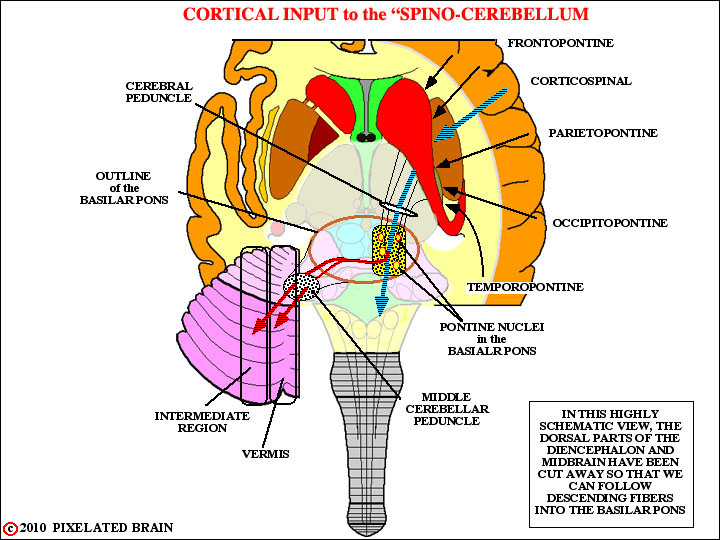
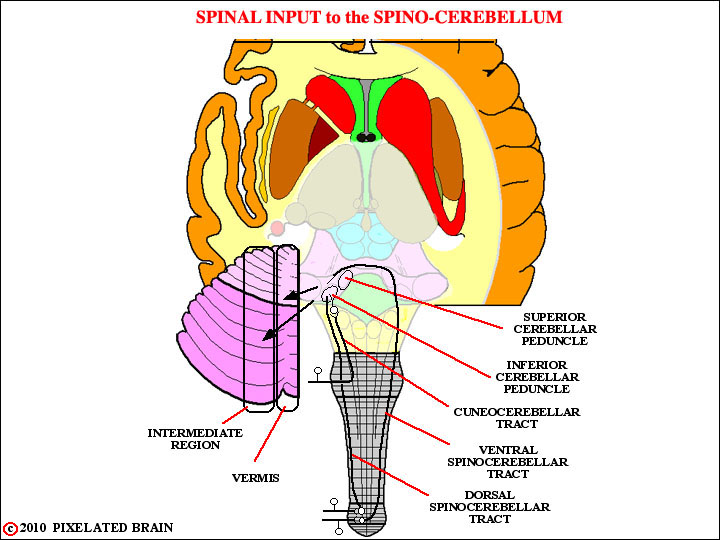
Once the motor commands have reached the spinal cord and movement has ensued, large diameter afferent fibers from muscle spindles and joint receptors measure the displacement that has actually taken place.
This proprioceptive information is relayed to the spinocerebellum (intermediate region and vermis) by the spinocerebellar pathways shown here.
This part of the cerebellum makes a comparison between the intended and actual movement. If there is a discrepancy between the two, corrective instructions are sent to the spinal cord.
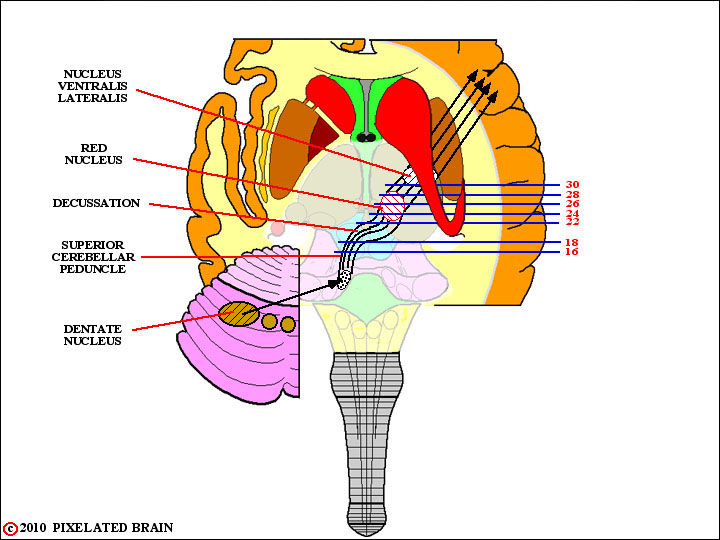
The output of the intermediate region projects to the magnocellular division of the red nucleus by way of the superior cerebellar peduncle. Most of the fibers terminate there.
Cells within this division of the nucleus then relay this information down to the cord in the rubrospinal tract. In addition, some of the fibers in the superior cerebellar peduncle pass through the red nucleus and continue on, to terminate in the the thalamus. So the information concerned with the adjustment of ongoing motor activity is passed "up" to the cortex as well as "down" to the spinal cord. The output of the vermis projects to the vestibular nuclei, and on to the cord in the vestibulospinal.
Thinking back to Module 5 you will recognize that the intermediate zone of the cerebellum exerts control over the distal parts of the extremities by acting through the lateral motor system (the rubrospinal tract). In contrast, the vermis exerts control over the proximal parts of the extremities and axial muscle by acting through the medial motor system (the vestibulospinal tracts)
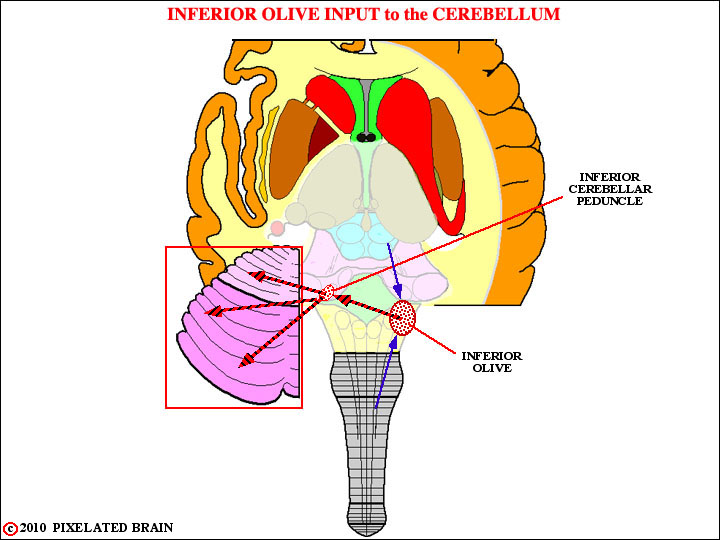
This view is included just to remind you that the cerebellum also receives a major input from the contralateral inferior olive.
These fibers enter by way of the inferior cerebellar peduncle and terminate by making extensive synaptic contact with purkinje cells. Because of the appearance of these terminals, they are called climbing fibers. All parts of the cerebellar cortex receive this input. The inferior olive, itself, receives extensive inputs from both ascending and descending pathways.